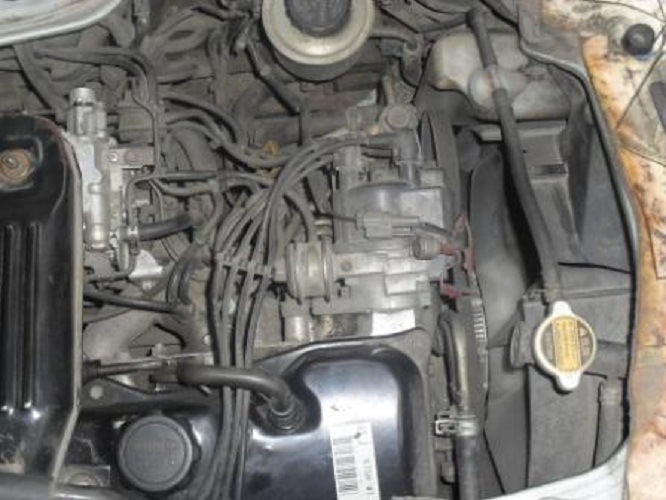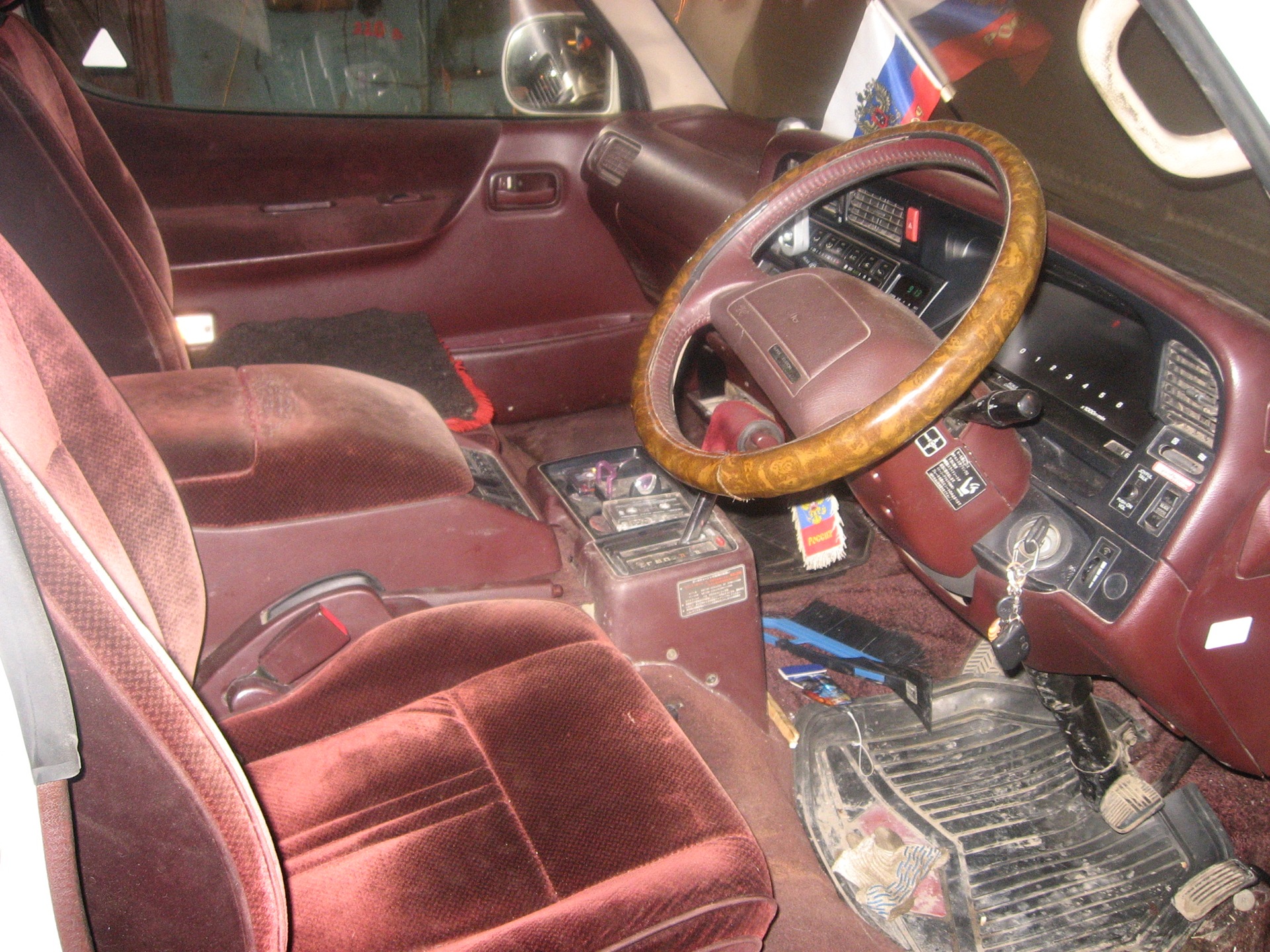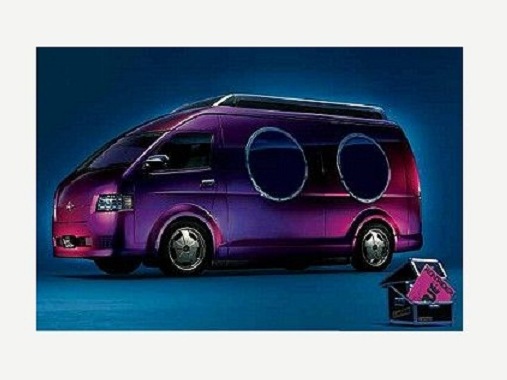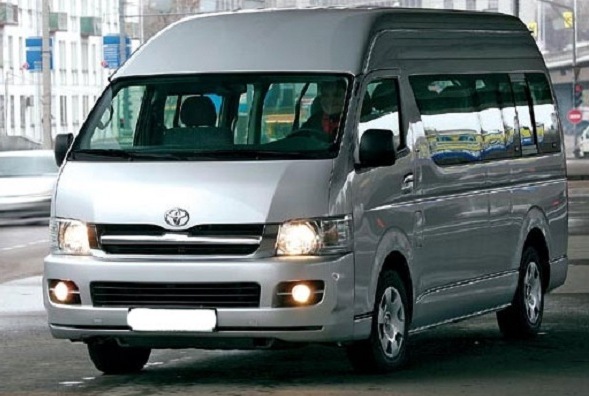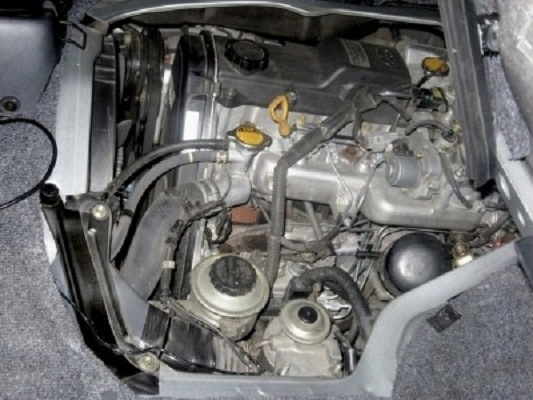About HI ACE - Toyota HiAce, 2.4 L, 1992
 The article and photos are not all mine.
The article and photos are not all mine. Based on materials from the site asjornal.ru/Maxim Markin
The first HiAce appeared already in 1967, and as the first mass minibus in Toyota, which also performed the function (most likely, it was even paramount) of a van. Further it was updated in 1977m 1982 and 1989m <. The latest generation, which existed in frankly utilitarian Japanese versions until 1999, is still in steady demand in our country. By the way, it is still produced in Argentina, Colombia, South Africa, Portugal, Kenya and in some countries of Southeast Asia. And not only for cargo transportation. We will talk about it, and at the same time we will hook the generation that has replaced the people's favorite. Its representatives, despite their "infancy" age and, accordingly, high price, life is not bad at all.
HiAce had a rather utilitarian face until 1989. But made in the spirit of the times
I remember about eight years ago I had a friend who owned a Toyota Lucida and was terribly dissatisfied with it. According to him, it was not at all about the location of the engine, but only about consumer qualities, including a relatively poor configuration. Then he wanted to change Lucida to HiAce, but there was not enough money. I, in turn, wondered how, having such a futuristic minivan, you can crave a "box on wheels". And only a few years later after we met in person, I managed to understand this craving for a carriage layout. It turned out
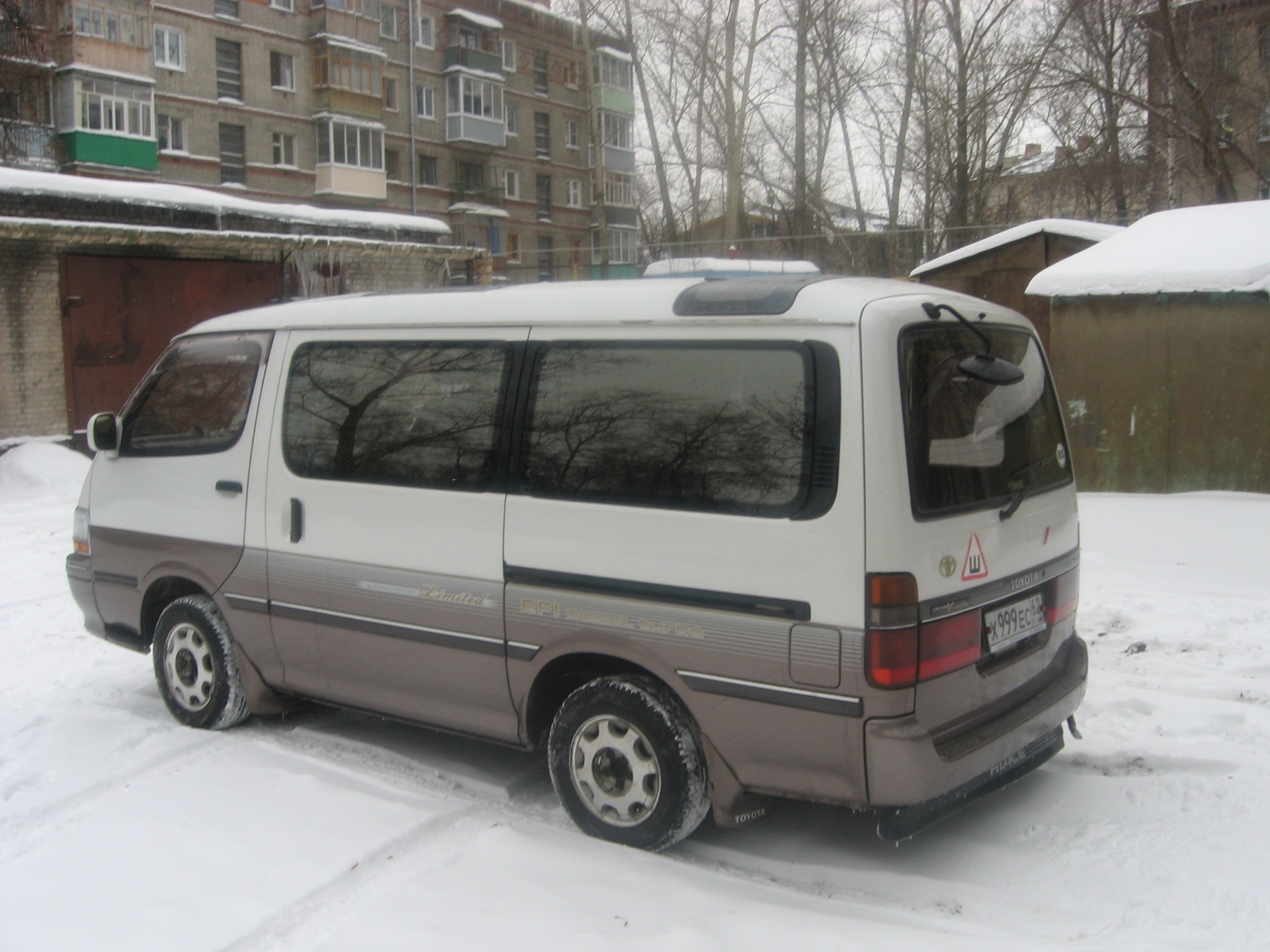 HiAce is one of the most well-packed Japanese minibuses. For example, the top version of Super Custom (these two words have become truly magical for all HiAce fans) suggests the presence of a full electric "stuffing", including central locking, power windows, curtains and even a steering wheel adjustment with memory, three hatches, also with electric drives, velor upholstery seats, carpets and many vents around the cabin, supplying air to all possible human limbs. For such a modification, an "automatic" and in most cases four-wheel drive were provided.
HiAce is one of the most well-packed Japanese minibuses. For example, the top version of Super Custom (these two words have become truly magical for all HiAce fans) suggests the presence of a full electric "stuffing", including central locking, power windows, curtains and even a steering wheel adjustment with memory, three hatches, also with electric drives, velor upholstery seats, carpets and many vents around the cabin, supplying air to all possible human limbs. For such a modification, an "automatic" and in most cases four-wheel drive were provided. ... But even less equipped versions will delight their owners with lightweight interior comfort.
... But even less equipped versions will delight their owners with lightweight interior comfort.Cargo compartment in the best traditions of van building

What to say about Regius, which appeared in 1997. Or Grand HiAce, which debuted two years later. Navigation systems, excellent "music", climate control and other Japanese services were installed on them with might and main. Transmission preferences tended exclusively towards automatic transmissions, and four-wheel drive was used even more often than on the previous generation. Needless to say about the quality of finishing materials, which was unimportant only in the 80s. And the fact that HiAce can accommodate from 6 to 15 people.
Of particular note is the Granvia modification. It appeared in 1995 and, in essence, was intended for export. In the mid-90s, Europeans were already "worried" about their own lives, and the carriage layout did not meet even the most primitive passive safety requirements. So they released a semi-hood Granvia in Toyota. The car was delivered to the states of the Old World as HiAce, and at home it existed, including under the name Regius. The cabover model was left for the third world countries and Russia. In different markets, the car differed in terms of carrying capacity. So, in Japan, the company recommended to transport no more than a ton, and the "Europeans" could move 1180 kg. By the way, HiAce with a "cabin over the engine" "took out" 1250 kg. But, as a rule, much more was loaded and loaded into it - up to one and a half tons. And after all, it walks without losing the elastic-rebound properties of the entire suspension. And also the "luggage" modification is very tough. And in comparison with the "passenger carrier" and in general. By passing into road irregularities, the van (by the way, there is a full-fledged van with solid metal sides in the HiAce line) came out similar to another three-ton truck. Shakes in him mercilessly.
3L was mainly installed on "wooden" versions
All "buses" since 1989 have offered a good motor choice. In ancient times, HiAce was equipped with two diesel engines and archaic "carburets". However, from the very moment of the change of generations, the bus received a pair of "flashing from compression" engines plus their modifications. But since 1993, along with the 2.4-liter 2L units
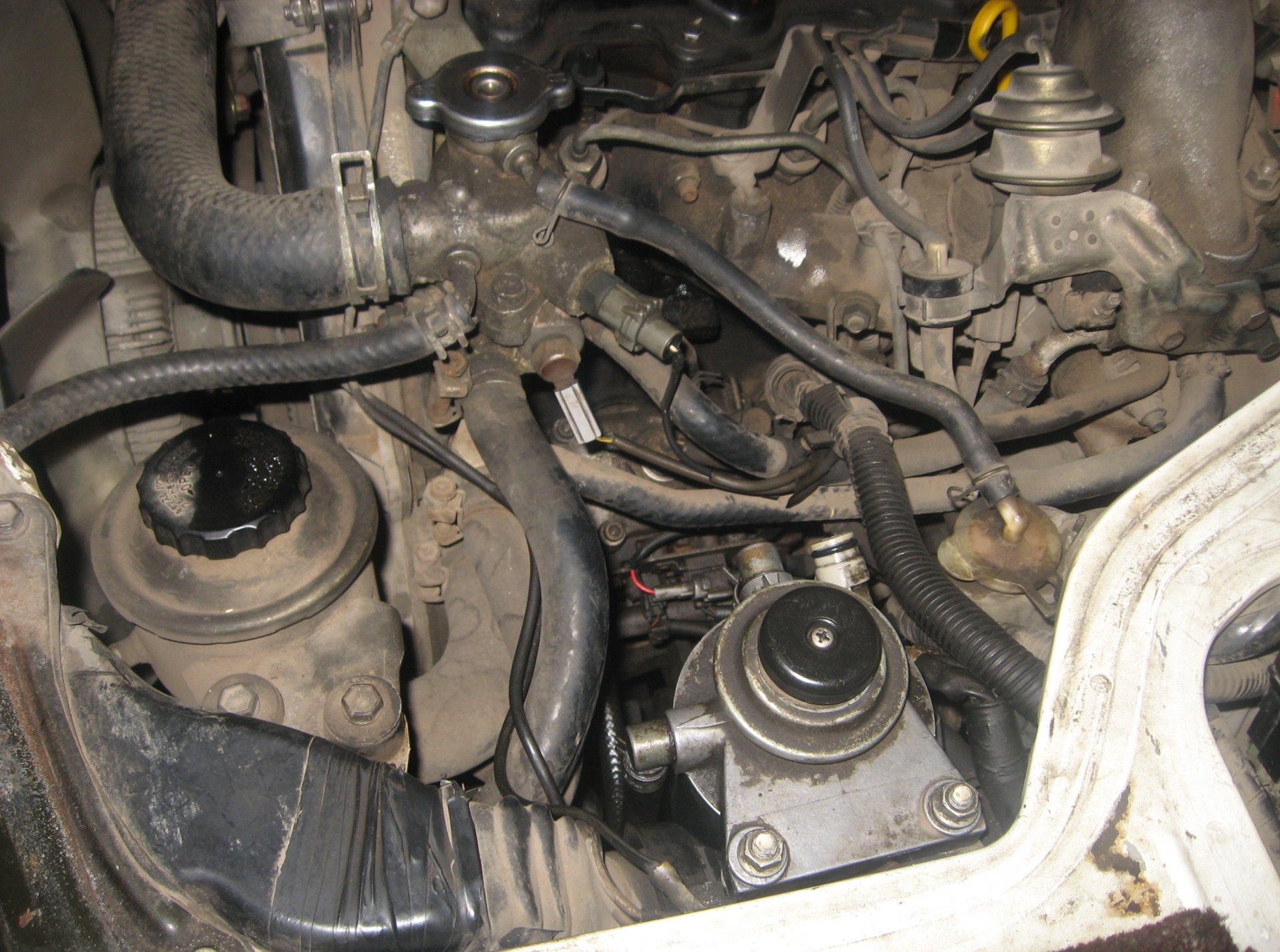 (85 HP; 165 Nm), 2L-T, 2L-TE (97 HP; 240 Nm), as well as the 2.8-liter 3L (91 HP; 198 Nm) on the steel car diesel "treshka" 1KZ-TE (130 HP; 289 Nm) and gasoline 1RZ-E (2.0 l; 110 HP; 167 Nm) and 2RZ-E (2.4 l; 120 l . s .; 188 Nm). Moreover, in our market, distributed injection units are a rarity. Most likely, in Japan, such HiAce of those years of release came off the assembly line in limited quantities, especially for people who were not able to pay for the diesel version. Then, at the end of the 90s, Russian customs rates made it possible to bring not just anything, but three-liter 1KZ-TE... The majority of such models are superb. Tellingly, the 3L is found exclusively on cargo buses. In this regard, Toyota minders did not change the old "smokehouse" even with this model (the 2.8-liter orthodox was always equipped with the most "loaded" variations).
(85 HP; 165 Nm), 2L-T, 2L-TE (97 HP; 240 Nm), as well as the 2.8-liter 3L (91 HP; 198 Nm) on the steel car diesel "treshka" 1KZ-TE (130 HP; 289 Nm) and gasoline 1RZ-E (2.0 l; 110 HP; 167 Nm) and 2RZ-E (2.4 l; 120 l . s .; 188 Nm). Moreover, in our market, distributed injection units are a rarity. Most likely, in Japan, such HiAce of those years of release came off the assembly line in limited quantities, especially for people who were not able to pay for the diesel version. Then, at the end of the 90s, Russian customs rates made it possible to bring not just anything, but three-liter 1KZ-TE... The majority of such models are superb. Tellingly, the 3L is found exclusively on cargo buses. In this regard, Toyota minders did not change the old "smokehouse" even with this model (the 2.8-liter orthodox was always equipped with the most "loaded" variations).In 1995-97, motor priorities changed somewhat. The Japanese were exporting cars with 2L-T with might and main, but they reserved more "tasty" installations for themselves: the same 1KZ-TE , RZ series engines, in particular, the new 2.7-liter 3RZ-FE with a capacity of 145 hp. from. (228 Nm), as well as a gasoline six-cylinder 180-horsepower 5VZ-FE with a volume of 3.4 liters and a torque of 299 Nm.
Luggage versions have a downshift
Which engine do you prefer? Without a doubt, the best of Toyota diesels with a volume of two to three liters is the 3L. But, as mentioned above, it was installed only on "wooden" versions. Super Custom often comes with 1KZ. It is generally accepted that this motor is an order of magnitude better than its ancient counterpart 2L-TE, however, the large power-to-weight ratio also implies increased demands on it from the driver. Hence the long-standing problems: breakdown of the gasket and often cracking and warping of the block head. So, when buying a bus with this diesel engine, as well as with a 2L-TE, you need to make sure that there is no "mixing of liquids". Oil in antifreeze or, conversely, an increased oil level in the engine are signs of a leak in one of the systems.
On the other hand, it is not the engines that should be blamed in the first place, but their owners. Correct operation without over-acceleration with timely oil change and, most importantly, coolant is capable of making long-livers even from these installations prone to overheating. For example, I was surprised by the recently heard story about the left-hand drive HiAce 1992 with a simple atmospheric 2L. The car was bought from the route and for him. According to completely objective signs - such as the already welded clutch legs and the gearbox wings loosened into the trash, the mileage was determined as approaching half a million kilometers. Nevertheless, the diesel outside was completely dry, and smoked only a little under the gas.
The 3.4-liter 5VZ-FE, due to its weak boost and humane Toyota's approach, is a reliable and unpretentious engine. Unless its V-shape, coupled with a small engine compartment, can cause some inconvenience. As for the rest of the big Regius and Grand HiAce, this engine fits perfectly. You just need to be prepared for high (especially in combination with a heavy body and four-wheel drive) fuel consumption. In a city, with immodest pedaling, appetite can go beyond 20 l / 100 km.
Then in case of a negative attitude towards diesels, you should pay attention to the 2.7-liter 3RZ-FE. Chain with adjustable valve clearances with washers (however, as in 5VZ-FE), again with a small power charge, this "four" is the best option for people who do not accept an aggressive driving style. Yes, phlegmatic, but in terms of consumption, you can fit into 13 liters. And cheaper than HiAce with this motor. There are also 1RZ-E and 2RZ-E from the same "chain" series, but in the previous generation of buses, these "lighters" are extremely rare, and in the last generation they were installed on cargo variants. It is difficult to say something specific about them - exclusive. But we can assume that they are no worse than the 3RZ-FE. But their gasoline traction and with a loaded bus is clearly not enough.
Grand HiAce
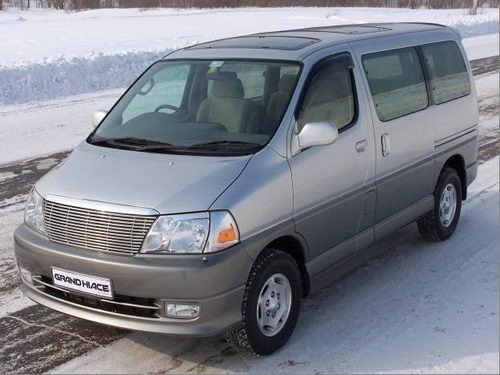 - a mixture of a truly bus cabin and VIP-class comfort
- a mixture of a truly bus cabin and VIP-class comfortTransmission. Aisin automatic transmissions, the famous A40 and A340, are a win-win. They run for a long time, both with rear and all-wheel drive. "Mechanics" also has an excellent resource. True, over time it sins by cutting the teeth on the gears. But ... Thunders and drives! For 4WD, the situation is as follows. Utility models have Part time. It is turned on by a button on the panel and then by locking the hub clutches. It also has a demultiplier. Superb buses have permanent all-wheel drive, but no crawler gear. Everything is reliable and works for a long time. And how not to work here if the transfer case, and, most likely, the rear gearbox are borrowed from well-known Toyota models, for example, the Surf.
The suspension is without a doubt a piece of reliability. The one-piece axle at the rear does not require any intervention at all. Even the spring bushings stretch much more than their Korean counterparts. At the front, the HiAce has a classic double wishbone with elastic elements in the form of torsion bars. Both toe and camber are regulated. The lower ball is removable, the upper - when it is. For some reason, one comes across both. There is no difference in the resource between them.
Two-liter petrol 1RZ-E - the prerogative of simple versions
At the cost of repair and maintenance, HiAce is like all Toyota. The only exception is that spare parts for diesel engines, by definition, are more expensive than gasoline components. And the "lighters" of this bus are from fresh motor series. So their components are not cheap either. But this is when compared, for example, with passenger car parts. And if with similar other Japanese brands ... But on the chassis HiAce offers a super-budget upgrade. Prices are comparable to those of Corolla, and sometimes even lower. So the main postulate of inexpensive operation when owning HiAce is not to "get" to repair motors
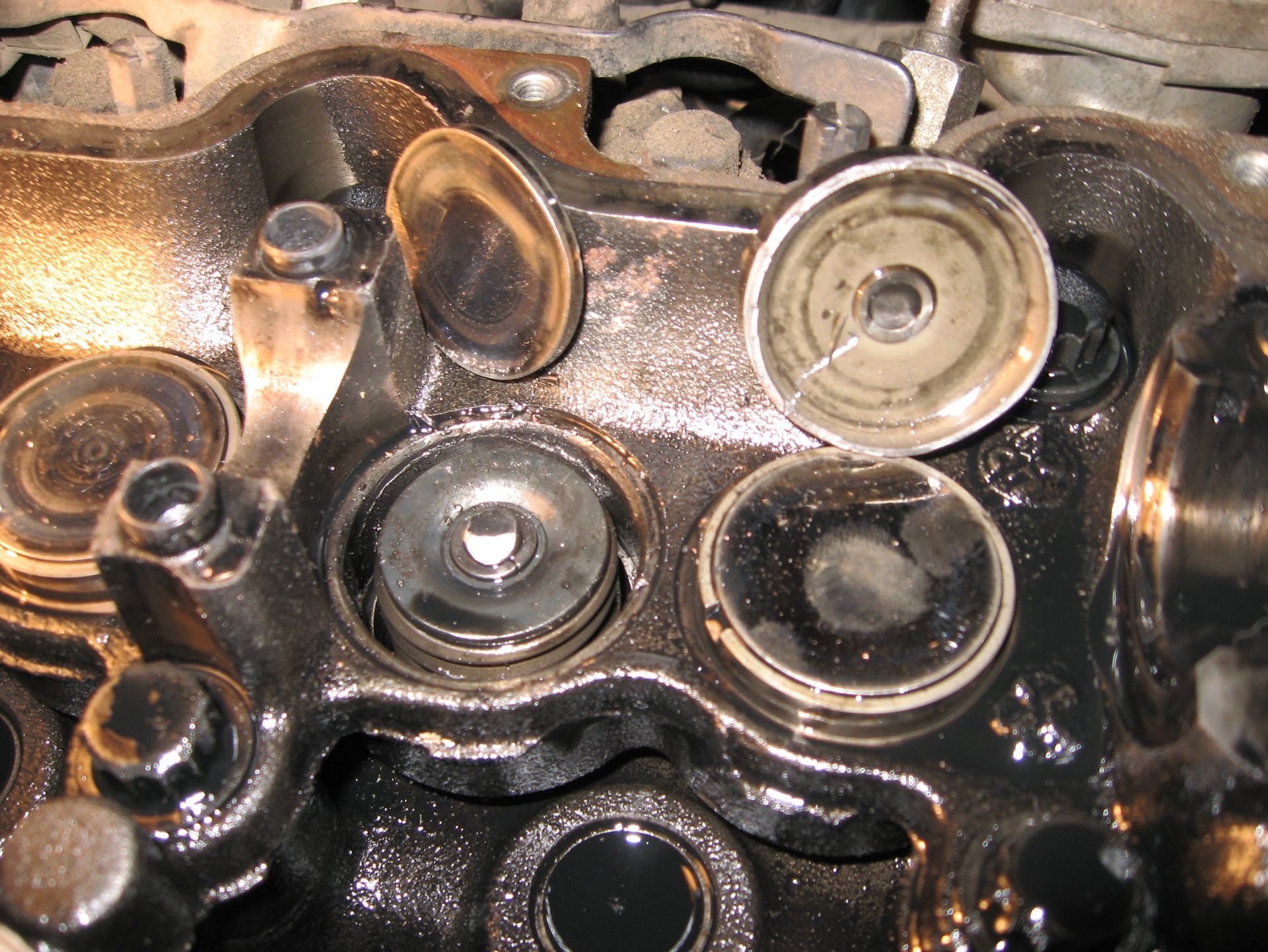
Probably one of the only obvious drawbacks of the Toyota bus is its market price. Instances of the mid-90s are estimated well over $ 10 thousand. The packaging in this case is comprehensive, and the condition is quite good. And still, in comparison, even with Japanese classmates, the cost seems high. Cargo options are priced significantly cheaper. Moreover, the difference in generations is not particularly noticeable here. For example, a 1999 cabover may cost the same as a utilitarian Regius a year younger - $ 10.5-11.5 thousand. Choose according to the principle, which is prettier and safer. For cars with a rich option, produced at the turn of the century, they ask about $ 17-18 thousand. But this is when the 3RZ-FE is hiding under their short hoods. In any other case, the price will be much higher. Up to 20 thousand and more. Expensive?! How to say. HiAce in the bus environment is known as the "corncob" among SUVs and the Crown of cars. Is this not the most compelling argument in favor of purchasing it. From myself, I tried my best.
